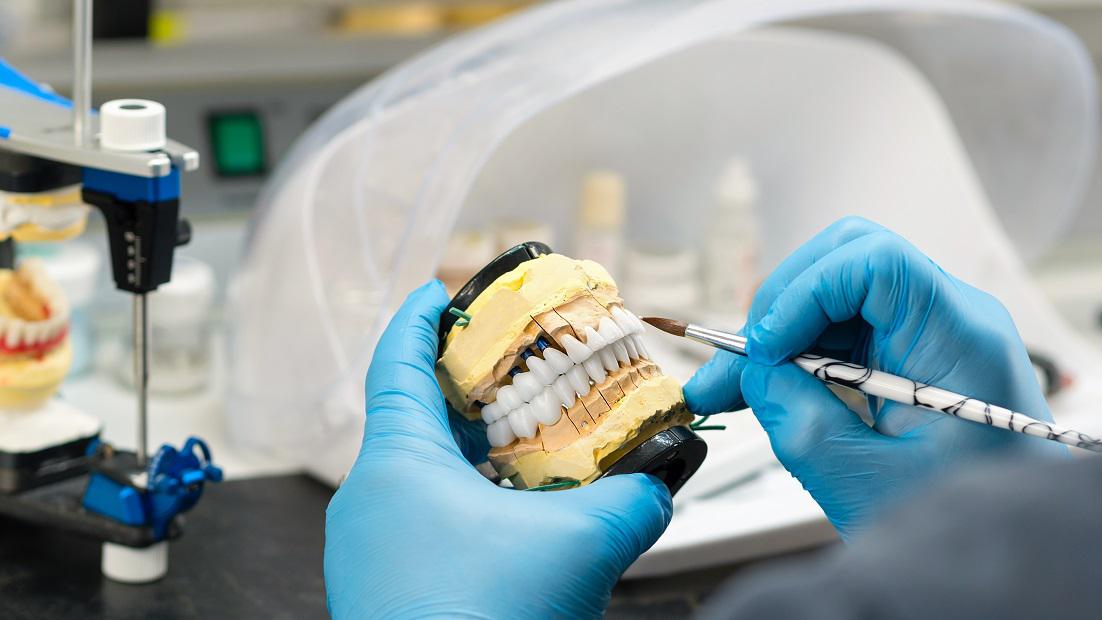Prosthodontics is a dental specialty focused on restoring and replacing missing or damaged teeth to improve both function and appearance. Using advanced technology, prosthodontics provides solutions for issues ranging from single-tooth damage to complete tooth loss, helping patients make informed decisions about their oral health.
What is Prosthodontics?
Prosthodontics is a specialized field of dentistry focused on the diagnosis, treatment planning, and restoration of oral function through the replacement of missing teeth and surrounding oral structures. Prosthodontists are dental specialists who complete an additional three years of advanced training beyond dental school, making them experts in complex restorative procedures.
The scope of prosthodontics extends beyond simple tooth replacement. These specialists address comprehensive oral rehabilitation, treating patients with extensive tooth loss, congenital defects, trauma-related damage, and complex aesthetic concerns. They work closely with other dental specialists, including oral surgeons, periodontists, and orthodontists, to provide coordinated care for challenging cases.
Prosthodontists also play a crucial role in treating temporomandibular joint (TMJ) disorders, sleep apnea, and other conditions that affect oral function. Their extensive training in occlusion—how teeth come together when you bite—makes them uniquely qualified to restore proper bite relationships and jaw function.
Types of Prosthodontic Treatments
Complete and Partial Dentures
Dentures remain one of the most common prosthodontic treatments for patients with multiple missing teeth. Complete dentures replace all teeth in the upper or lower jaw, while partial dentures, like those in Lafayette, LA, replace several missing teeth while preserving remaining natural teeth.
Modern dentures have evolved significantly from their predecessors. Today’s dentures offer improved fit, comfort, and appearance through advanced materials and precise fabrication techniques. Implant-supported dentures provide even greater stability and function compared to traditional removable options.
Dental Bridges
Fixed bridges replace one or more missing teeth by anchoring artificial teeth to adjacent natural teeth or dental implants. Traditional bridges require preparation of neighboring teeth to serve as abutments, while implant-supported bridges preserve natural tooth structure.
Bridges restore proper chewing function and prevent remaining teeth from shifting out of position. They offer a permanent solution that feels more natural than removable appliances.
Crowns and Onlays
Dental crowns cover and protect severely damaged or weakened teeth, restoring their shape, size, and function. Prosthodontists use crowns to protect teeth after root canal treatment, restore fractured teeth, or improve the appearance of severely discolored teeth.
Onlays provide a more conservative alternative to crowns when damage doesn’t require complete coverage. These partial crowns preserve more natural tooth structure while providing necessary protection and restoration.
Dental Implants
Dental implants represent the gold standard for single tooth replacement. These titanium posts integrate with jaw bone to provide a stable foundation for crowns, bridges, or dentures. Prosthodontists often coordinate implant placement with oral surgeons and handle the restorative phase of treatment.
Implant-supported restorations offer unmatched stability, longevity, and preservation of jaw bone structure. They function like natural teeth and require no special maintenance beyond regular oral hygiene.
Benefits of Prosthodontic Treatment
Restored Oral Function
The primary goal of prosthodontic treatment is restoring proper oral function. Missing or damaged teeth compromise your ability to chew efficiently, leading to digestive issues and nutritional deficiencies. Prosthodontic restorations return normal chewing capacity, allowing patients to enjoy a varied, nutritious diet.
Proper speech requires coordination between teeth, tongue, and lips. Missing front teeth particularly affect pronunciation of certain sounds. Prosthodontic treatment restores clear speech patterns and communication confidence.
Enhanced Aesthetics
Prosthodontic restorations dramatically improve smile aesthetics. Missing teeth create gaps that age the face and affect facial support. Damaged or discolored teeth undermine smile confidence. Modern prosthodontic materials and techniques create restorations that are virtually indistinguishable from natural teeth.
Color matching, shape optimization, and proper proportions ensure restorations complement existing teeth and facial features. Many patients report increased self-confidence and social comfort following prosthodontic treatment.
Overall Health Benefits
Missing teeth affect more than just oral function. Tooth loss leads to bone resorption in the jaw, changing facial structure and creating a sunken appearance. Prosthodontic treatments, particularly implant-supported options, help preserve jaw bone and maintain facial support.
Properly restored teeth also improve oral hygiene maintenance. Gaps from missing teeth create food traps and bacteria accumulation sites, increasing risk of gum disease and additional tooth loss. Complete restoration allows for effective cleaning and better long-term oral health.
Who Needs Prosthodontic Treatment?
Several conditions and circumstances indicate the need for prosthodontic evaluation and treatment. Patients with extensive tooth loss from decay, gum disease, or trauma benefit from comprehensive prosthodontic care. Those with congenital conditions affecting tooth development often require specialized restorative treatment.
Patients experiencing bite problems, jaw pain, or TMJ symptoms may need prosthodontic intervention to restore proper occlusion and jaw function. Heavy tooth wear from grinding or acid erosion often requires full-mouth reconstruction under prosthodontic guidance.
Cancer patients who have undergone head and neck radiation or surgery frequently need prosthodontic rehabilitation to restore oral function and appearance. The complexity of these cases requires the specialized training and expertise that prosthodontists provide.
Finding a Qualified Prosthodontist
When seeking prosthodontic care, verify that your provider has completed an accredited prosthodontic residency program. Board certification through the American Board of Prosthodontics indicates additional commitment to excellence and continuing education.
Look for prosthodontists who stay current with advancing technology and materials. Digital dentistry, 3D imaging, and computer-aided design and manufacturing (CAD/CAM) systems improve treatment precision and patient outcomes.
Consider the prosthodontist’s experience with cases similar to yours. Complex full-mouth reconstructions require different expertise than single-tooth replacements. Don’t hesitate to ask about case examples and treatment approaches.
The Prosthodontic Treatment Process
Prosthodontic treatment begins with comprehensive evaluation including medical history review, clinical examination, and diagnostic imaging. This assessment identifies all issues affecting oral function and aesthetics.
Treatment planning involves developing a coordinated approach to address all identified problems. Complex cases may require staging treatment over several phases, coordinating with other specialists as needed.
Preparation phases might include tooth extraction, bone grafting, or periodontal treatment to create optimal conditions for restoration placement. Temporary restorations often maintain function and appearance during healing periods.
Final restoration placement involves precise fabrication and careful adjustment to ensure proper fit, function, and appearance. Follow-up appointments monitor healing and make any necessary adjustments.
Advancements in Modern Prosthodontics
Digital technology has revolutionized prosthodontic treatment. Digital impressions eliminate uncomfortable traditional impression materials while providing greater accuracy. 3D imaging allows precise treatment planning and virtual restoration design.
CAD/CAM technology enables same-day crown fabrication in many cases, reducing treatment time and temporary restoration needs. Digital smile design helps patients visualize treatment outcomes before beginning treatment.
Advanced materials offer improved strength, aesthetics, and biocompatibility. All-ceramic materials provide excellent appearance without metal substructures. Zirconia offers exceptional strength for challenging situations.
Conclusion
Now that we have explored the advancements in dental technology and materials, it is clear that dentistry has come a long way from its traditional methods. With digital imaging, CAD/CAM technology, virtual smile design, and advanced materials like zirconia, modern dentistry is able to provide patients with more accurate and efficient treatments.

















